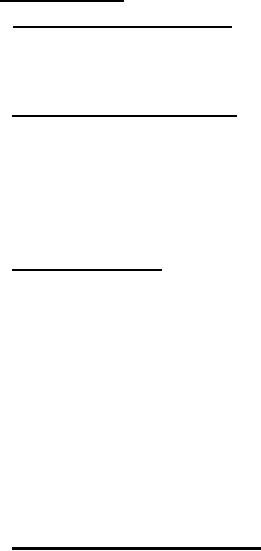 |
|||
|
|
|||
| ||||||||||
|
|  MIL-C-82630(OS)
One cycle of torsion shall consist of a 90-degree rotation in one direction, a 180-degree
rotation in the reverse direction, and a 90-degree rotation in the original direction to the
start position, in a plane perpendicular to the fixed support.
A test shall be conducted at a rate of two cycles per minute. The time duration of one
cycle shall approximate but not exceed 15 seconds. Continuity of all conductors shall be
monitored continuously. The test shall be stopped and the number of cycles recorded In the
event of failure of any conductor. The test shall consist of 3000 cycles of torsion. At the
conclusion of this test, the cable shall be subjected to the test of 4.5.4.
4.5.10 Environmental tests.
4.5.10.1 Salt water immersion (Type I only). A length of completed cable shall be subjected
to a 30-day immersion test. A cable shall be attached to a fixture so that the exposed ends
will not be immersed in sea water. The cable shall be immersed for 16 hours and removed for
a period of 8 hours. This sequence shall be repeated 30 times. No fresh water rinse shall be
performed during the 30 cycles. At the conclusion of this test the cable shall be examined
for conformance to the requirements of 3.6.1.
4.5.10.2 Hydrostatic pressure (Type II only). An externally sustained hydrostatic pressure
of 1000 psi (7MPa) maintained for 90 minutes shall be applied to sample lengths of cable of not
less than 7 feet (2.15 metres) or more than 9 feet (2.75 metres). Pressure shall be applied on
the jacket
in such a manner that the end faces of the cable can be examined for evidence of
moisture leaks between the conductors.
Following the test, the jacket shall be stripped from the cable and the cable core examined
thoroughly for evidence of moisture and for conformance to the requirements of 3,6.1.
Fifteen samples shall be taken from each lot, or two samples per 1000 feet (300m) for lots
under 10,000 feet (3km), for hydrostatic testing.
4.5.10.3 Temperature and humidity. A 20-foot (7-metre) length of completed cable shall be
placed in a test chamber such that the exposed ends are not inside the chamber and are prepared
for monitoring the electrical characteristics. The cable shall then be subjected to a tem-
perature of +122 degrees F (50 C) for 2 hours. During this 2-hour period the cable shall be
subjected to the test of 4.5.4.
(a) After 2 hours, the cable shall be subjected to five 24-hour cycles of 16 hours at
+122 degrees F (50 C) and 8 hours at +86 degrees F (30 C). The relative humidity shall be
maintained constant at 95 percent during the five cycles. While at +122 degrees F (50 C),
the test of 4.5.4 shall be performed.
(b) Upon completion of five cycles, the temperature shall be maintained at +122 degrees F
(50 C) for 8 hours. During the 8-hour period, the relative humidity shall be 50 percent
for the first 2 hours, 95 percent during the next 4 hours , and 40 percent during the final
2 hours. At 30-minute intervals the continuity of all conductors shall be checked. Upon
completion, the test of 4.5.4 shall be performed.
NOTE: The transitions between temperatures shall be ac-
complished within the 8-hour period so that the time at
the high temperature is approximately 16 hours. Each
transition shall not exceed 1-1/2 hours.
4.5.10.4 Temperature and humidity (storage mode). The cable assembly, in the packaged con-
dition, shall be subjected to a 28-day temperature and humidity test. The total teat is made
up of two 14-day temperature and humidity cycles. The term "chamber temperature", as used In
this test, refers to the temperature of the air Immediately surrounding the equipment. Tempera-
ture may be changed(l) by varying the temperature of a single chamber or (2) by moving the test
specimen from one constant temperature chamber to another. The fluctuations from all specified
temperatures shall not exceed 10 degrees F (5.5 C). The following test sequence is based on
a start of 0800 Monday. Regardless of the actual day and time the test is initiated, there
shall be no deviation from the test sequence as prescribed.
(a) At 0800 Monday place the test specimen in a chamber which has been maintained at -65
degrees F (-54 C) for at least 2 hours immediately prior to 0800 (humidity not controlled).
(b) At 1600 Monday the chamber temperature shall be changed to +160 degrees F (71 C) and
95 +3 -O percent humidity. The chamber temperature shall reach +160 degrees F (71 C) and
95 percent humidity not later than 1800.
11
|
|
Privacy Statement - Press Release - Copyright Information. - Contact Us |